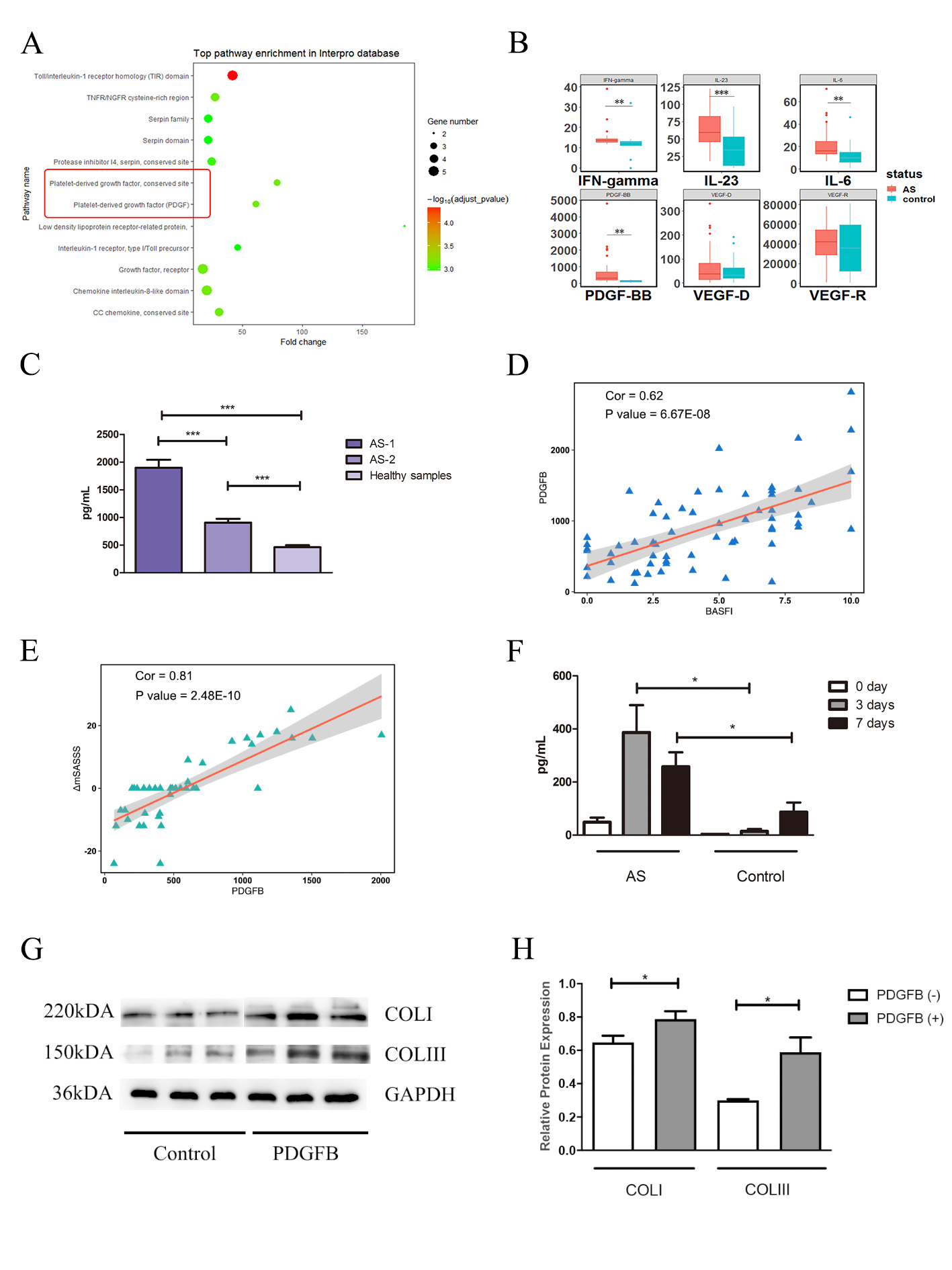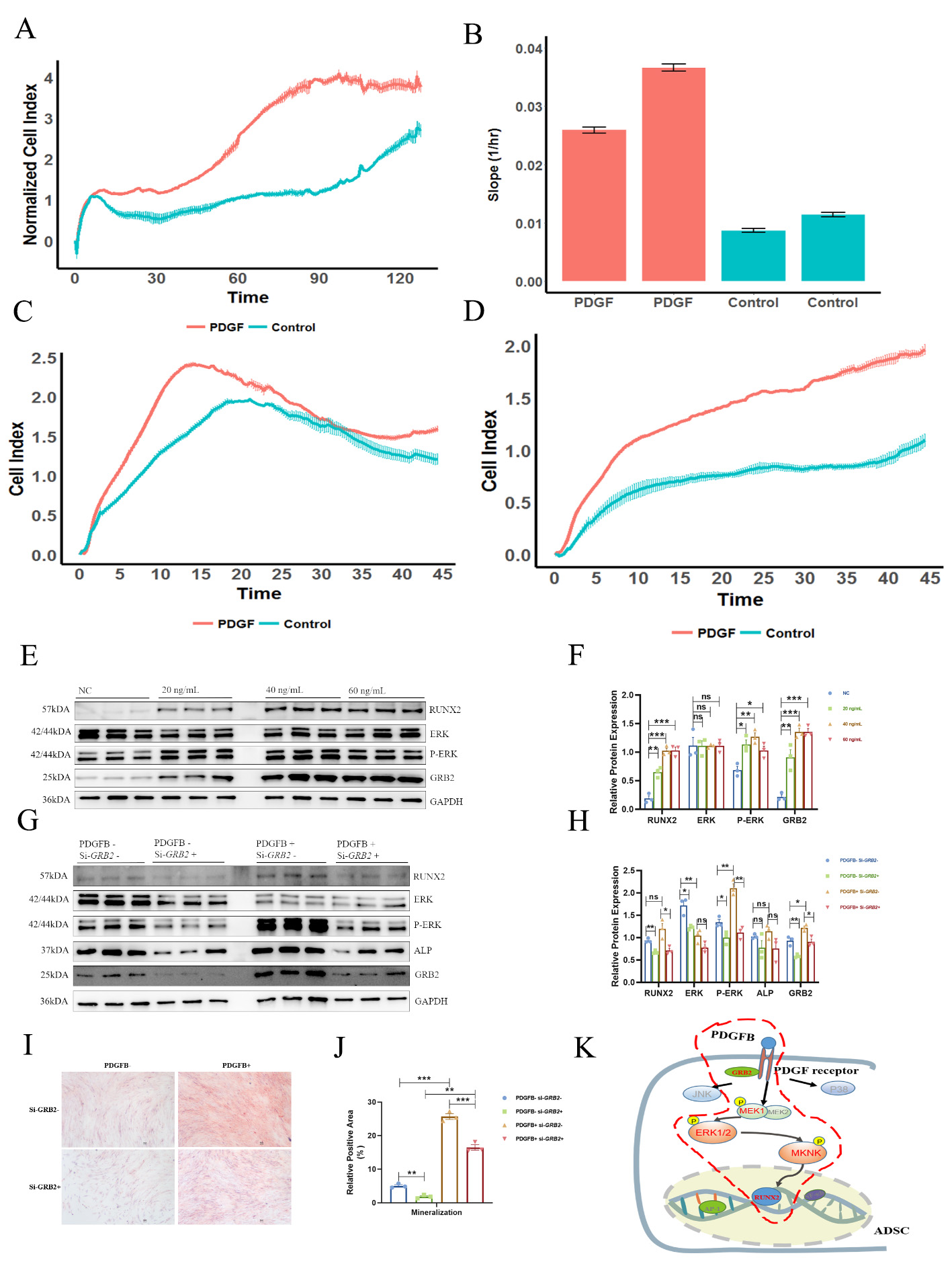Session Information
Session Type: Abstract Session
Session Time: 4:00PM-5:30PM
Background/Purpose: Ankylosing spondylitis (AS) is a chronic inflammatory disease that mainly affects the sacroiliac joint and spine. However, the real mechanisms of immune cells acting on syndesmophyte formation in AS are not well identified. We aimed to find the key AS-associated cytokine and assess its pathogenic role in AS.
Methods: A protein array with 1000 cytokines was performed in five AS patients with the first diagnosis and five age- and gender-matched healthy controls to discover the differentially expressed cytokines. The candidate differentially expressed cytokines were further quantified by multiplex protein quantitation (3 AS-associated cytokines and 3 PDGF-pathway cytokines) and ELISA (PDGFB) in independent samples (a total of 140 AS patients vs 140 healthy controls). The effects of PDGFB, the candidate cytokine, were examined by using adipose-derived stem cells (ADSCs) and human fetal osteoblast cell line (hFOB1.19) as in vitro mesenchymal cell and preosteoblast models, respectively. Furthermore, whole-transcriptome sequencing and enrichment of phosphorylated peptides were performed by using cell models to explore the underlying mechanisms of PDGFB. The xCELLigence system was applied to examine the proliferation, chemotaxis, and migration abilities of PDGFB-stimulated or -unstimulated cells.
Results: The PDGF pathway was observed to have abnormal expression in the protein array, and PDGFB expression was further found to be up-regulated in 140 Chinese AS patients (Figures 1A-C). Importantly, PDGFB expression was significantly correlated with BASFI (Pearson coefficient/p value = 0.62/6.70E-8) and with the variance of the mSASSS score (mSASSS two years – baseline, Pearson coefficient/p value = 0.76/8.75E-10) (Figures 1D-E). In AS patients, preosteoclasts secreted more PDGFB than the healthy controls (p value = 1.16E-2) (Figure 1F), which could promote ADSCs osteogenesis and enhance collagen synthesis (COLI and COLIII) of osteoblasts (hFOB 1.19) (Figures 1G-H). In addition, PDGFB promoted the proliferation, chemotaxis and migration of ADSCs (Figures 2A-D). Mechanismly, in ADSCs, PDGFB stimulated ERK phosphorylation by upregulating GRB2 expression, and then increased the expression of RUNX2 to promote osteoblastogenesis of ADSCs (Figures 2E-K).
Conclusion: PDGFB stimulates the GRB2/ERK/RUNX2 pathway in ADSCs, promotes osteoblastogenesis of ADSCs, and enhances the extracellular matrix of osteoblasts, which may contribute to pathological bone formation in AS.
To cite this abstract in AMA style:
Tang Y, Liu Q, Tang K, Geng C, Xie J, Wang J, Zhu Q, Liu J. Preosteoclast Plays a Pathogenic Role in Syndesmophyte Formation of Ankylosing Spondylitis Through the Secreted PDGFB – GRB2/ERK/RUNX2 Pathway [abstract]. Arthritis Rheumatol. 2023; 75 (suppl 9). https://acrabstracts.org/abstract/preosteoclast-plays-a-pathogenic-role-in-syndesmophyte-formation-of-ankylosing-spondylitis-through-the-secreted-pdgfb-grb2-erk-runx2-pathway/. Accessed .« Back to ACR Convergence 2023
ACR Meeting Abstracts - https://acrabstracts.org/abstract/preosteoclast-plays-a-pathogenic-role-in-syndesmophyte-formation-of-ankylosing-spondylitis-through-the-secreted-pdgfb-grb2-erk-runx2-pathway/


